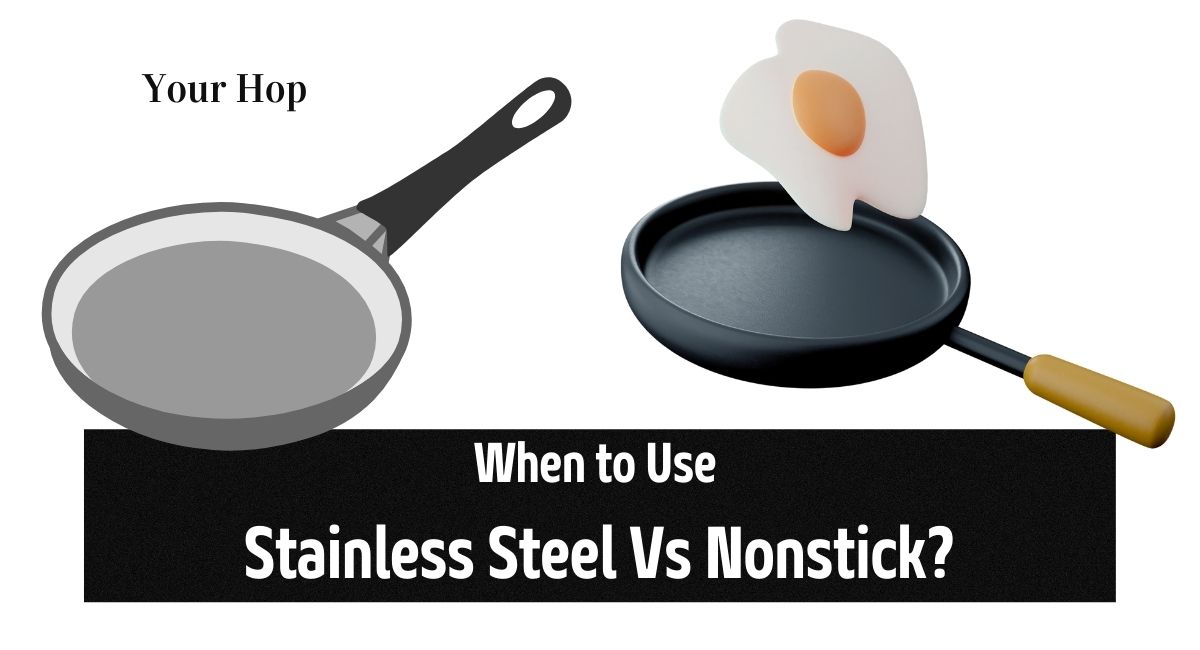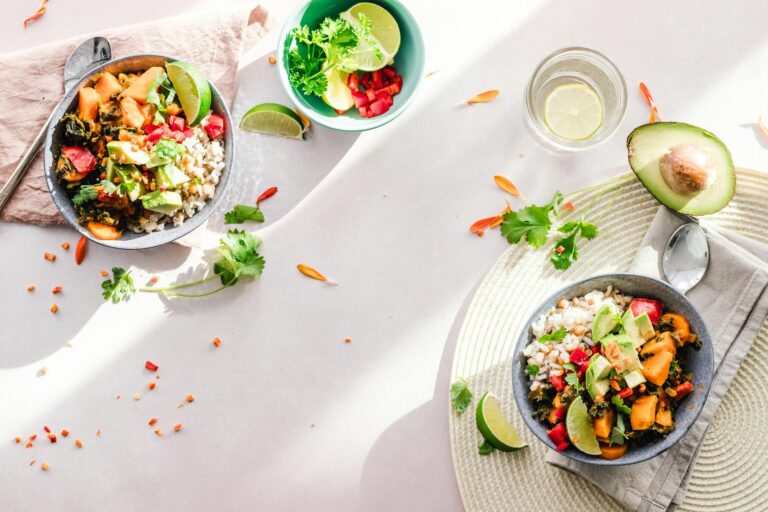When it comes to purchasing cookware, many individuals worry if they should go with nonstick or stainless steel. It’s a good idea to know the benefits and drawbacks of both stainless steel and nonstick cookware before making a purchase. Personal preference is the most important factor in determining which pans (Stainless Steel Vs Nonstick) are best suited for your cooking needs.
When Stainless Steel Pans Are Necessary
A stainless steel pan may be used to cook almost anything. They’re more difficult to clean, but most items won’t adhere to the pan because they sear, resulting in a crust that releases from the pan’s bottom when you use enough heat and fat.
Acidic foods, metal utensils, and nonstick sprays are all welcome here, as are foods that demand higher heat.
The higher heat tolerance of these pans on the stove and oven makes them excellent for dishes like steaks, poultry, pork, and braises that require a high sear and an oven finish.
If you’re cooking anything like a little entire chicken, you could even use the larger models as roasters.
Stainless steel pans should be cleaned after they’ve cooled down to avoid warping or harming the pan.
Dishwasher-safe stainless steel pots and pans are not recommended.
If a soak doesn’t work, we recommend a Bar Keepers Friend scrub instead, which we swear by for tougher messes.
Pros of the stainless-steel pan
Searing and browning foods in stainless steel pans are a breeze because to the ability to deglaze the pan, which allows you to incorporate the delicious brown bits that are clinging to the bottom of the pan into the sauce or glaze.
Most dishes won’t stick to a stainless-steel pan after you learn the proper technique.
If you know how to handle stainless steel pans, you’ll get greater outcomes with them, which is why they’re so popular in professional kitchens.
In terms of durability, stainless steel pans are superior to nonstick pans. Because they lack a protective coating, they aren’t susceptible to wear and tear.
Nonstick Pans: When to Use Them
It’s the nonstick coating that enables nonstick pans to perform what they do, and extreme heat damages the coating. Eggs, crepes, pancakes, and fish that can be cooked on medium and low heat should be your go-to foods.
Never use a nonstick pan to sear meats. You can’t use high heat in a nonstick pan for searing. Acidic foods (such as tomato sauces or wines) and nonstick cooking sprays should also be avoided.
A sticky residue is left behind after using nonstick sprays, which eats away at the coating.
A non-stick pan pros
When preparing dishes that tend to adhere to stainless steel pans like pancakes and crepes, it is best to use nonstick cookware.
To cook, you don’t have to use as much oil or fat thanks to the natural nonstick coating. You may even cook without any fats altogether, although the flavor will suffer.
It’s considerably easier to get nonstick cookware clean because there’s nothing to soak or scrub off the surface.
Nonstick spray can be replaced with oil or butter.
Using nonstick pans and pots for delicate foods like scrambled eggs and other quick-cook breakfast items is recommended over using stainless steel or cast iron cookware.
You may also want to use a non-stick pan if you’re cooking something like a breaded cod fillet. “If you’re cooking something like that and don’t want the breading to stick to your pan, nonstick releases quite beautifully.”
Which is Better for You: Stainless Steel or Nonstick Cookware?
As a time-concerned cook, nonstick cookware is an excellent choice. There is no nonstick coating on stainless steel cookware.
Because they’re aimed at distinct customers, they’re on opposing ends of the spectrum.”
Almost all nonstick sets are made of aluminum, which allows for fast heat transfer and easy cooking and cleaning.
Nonstick and stainless steel cookware are essential if you’re a serious home chef.
However, there is a wide range from one chef to the next. Start with one of each and you’ll be able to make a more informed decision about where to allocate your funds.
A whole set of stainless steel pans with one or two nonstick pans can be ideal for certain people, while others would prefer the other way around.
Either option is a good one. It all boils down to personal preference when it comes to food preparation in the kitchen.
Stainless steel is the finest option if you’re looking for a pan that can be used both on the stovetop and in the oven.
The nonstick pan is a better option if you’re mostly preparing eggs and fish, because it’s easier to clean up.
Cooking classes in your area may allow you to test out both stainless steel and nonstick cookware before making a purchase.
This is a great choice for people who aren’t sure what they want to do yet. Plus, you’ll learn a lot of useful skills!
Conclusion
Nonstick cookware is the way to go if you’re a first-time cook. Easy to use, works on both gas and electric burners, and is a breeze to clean.
For those who know what they’re doing in the kitchen, stainless steel is the best option. Quality stainless steel sets are built to last, making them more cost-effective in the long run.
Many stainless steel sets allow you to cook on the stovetop and in the oven, allowing you to prepare a wider variety of foods in the kitchen.
More Amazing Articles for You






